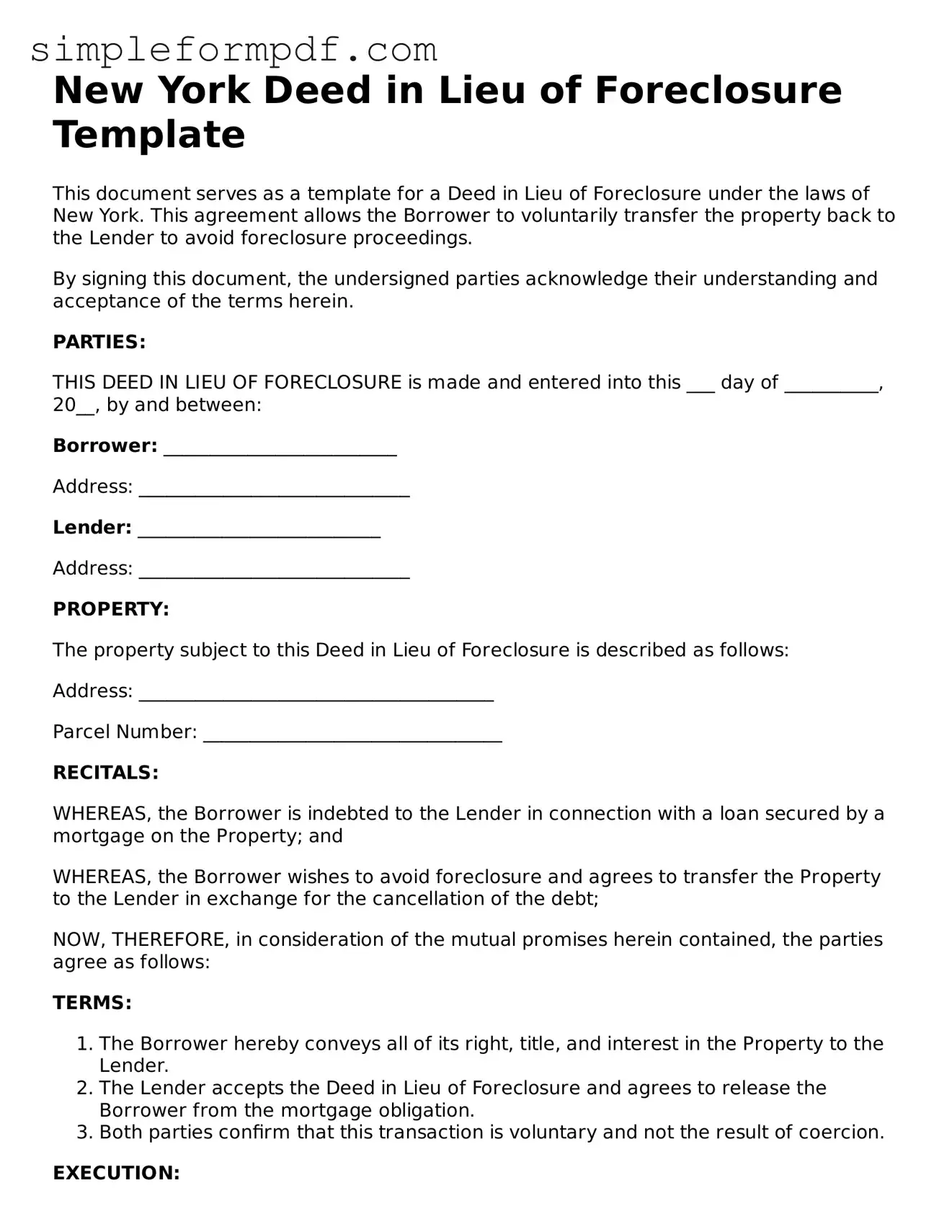New York Deed in Lieu of Foreclosure Template
This document serves as a template for a Deed in Lieu of Foreclosure under the laws of New York. This agreement allows the Borrower to voluntarily transfer the property back to the Lender to avoid foreclosure proceedings.
By signing this document, the undersigned parties acknowledge their understanding and acceptance of the terms herein.
PARTIES:
THIS DEED IN LIEU OF FORECLOSURE is made and entered into this ___ day of __________, 20__, by and between:
Borrower: _________________________
Address: _____________________________
Lender: __________________________
Address: _____________________________
PROPERTY:
The property subject to this Deed in Lieu of Foreclosure is described as follows:
Address: ______________________________________
Parcel Number: ________________________________
RECITALS:
WHEREAS, the Borrower is indebted to the Lender in connection with a loan secured by a mortgage on the Property; and
WHEREAS, the Borrower wishes to avoid foreclosure and agrees to transfer the Property to the Lender in exchange for the cancellation of the debt;
NOW, THEREFORE, in consideration of the mutual promises herein contained, the parties agree as follows:
TERMS:
- The Borrower hereby conveys all of its right, title, and interest in the Property to the Lender.
- The Lender accepts the Deed in Lieu of Foreclosure and agrees to release the Borrower from the mortgage obligation.
- Both parties confirm that this transaction is voluntary and not the result of coercion.
EXECUTION:
IN WITNESS WHEREOF, the parties have executed this Deed in Lieu of Foreclosure as of the date first written above.
Borrower Signature: _________________________
Date: _____________________________
Lender Signature: __________________________
Date: _____________________________
NOTARY ACKNOWLEDGMENT:
State of New York
County of ____________________
On this ___ day of __________, 20__, before me personally appeared __________, to me known to be the person described in and who executed the foregoing instrument and acknowledged that he/she executed the same.
Notary Public: ____________________________
My Commission Expires: ____________________
